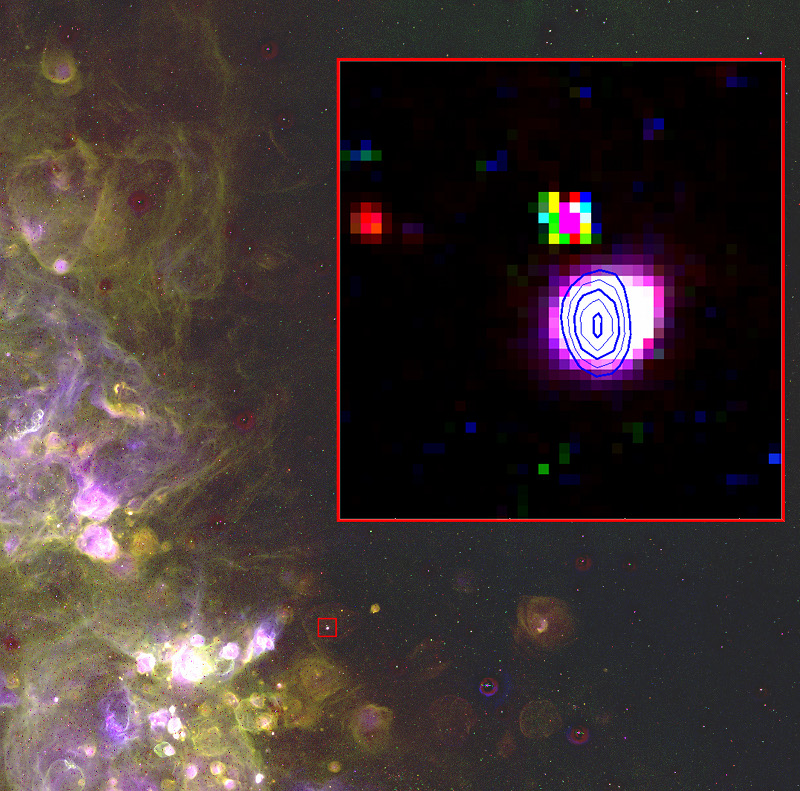A group of scientists in Australia and the United States, led by Professor Miroslav Filipović from the University of Western Sydney, discovered a new class of objects called 'Planetary Nebula'. They reported their research in the Monthly Notices of the Royal Astronomical Society magazine.
Planetary nebulae are layers of gas and dust released by stars near the end of life and are often observed around stars that are equivalent to or smaller than the Sun.
The team investigated Magellanic Clouds, the Milky Way's two neighboring galaxies, using a radio telescope from the Commonwealth Scientific and Industrial Research Organization (CSIRO), the Australian National Telescope Facility. They found 15 radio objects in Magellanic Clouds similar to the planetary nebula observed by optical telescopes.
The classification of this new object is an unusually strong source of radio waves. While the planetary nebula is normally found around small stars about the size of the Sun, this planetary nebula is the shell that surrounds stars of greater mass.
 An optical image from University of Michigan / CTIO's 0.6m Curtis Schmidt Telescope of the brightest radio planetary nebula in Small Magellanic Cloud, JD 04. (Photo: Magellanic Cloud Survey Team)
An optical image from University of Michigan / CTIO's 0.6m Curtis Schmidt Telescope of the brightest radio planetary nebula in Small Magellanic Cloud, JD 04. (Photo: Magellanic Cloud Survey Team)
Filipović's group argues that recognizing these new objects could help solve the 'mass problem' - the absence of planetary nebulae around central stars, one to eight times the mass. Sun. To this day, most known planetary nebulae have central stars and surrounding nebula masses of 0.6 and 0.3 times the mass of the Sun, but no nebula has ever been was discovered around a big star.
The new planetary nebula comes with larger stars, about 8 times the mass of the Sun. And the nebula material around each star has 2.6 times the mass of the Sun.
Filipović said: 'This is a totally unexpected thing for us, because no one expects to detect these objects at radio wavelengths and with today's radio telescope generation. We kept these findings hidden for 3 years until we were 100% sure that they were planetary nebulae. '
Some of the new 15 planetary nebulae were discovered three times as bright in Magananic Clouds as any relative in the Milky Way. But to observe them in more detail, astronomers need the power of the next generation of radio telescopes.
 Van Allen's belt and evidence that the Apollo 11 mission to the Moon was myth
Van Allen's belt and evidence that the Apollo 11 mission to the Moon was myth The levels of civilization in the universe (Kardashev scale)
The levels of civilization in the universe (Kardashev scale) Today Mars, the sun and the Earth are aligned
Today Mars, the sun and the Earth are aligned The Amazon owner announced a secret plan to build a space base for thousands of people
The Amazon owner announced a secret plan to build a space base for thousands of people